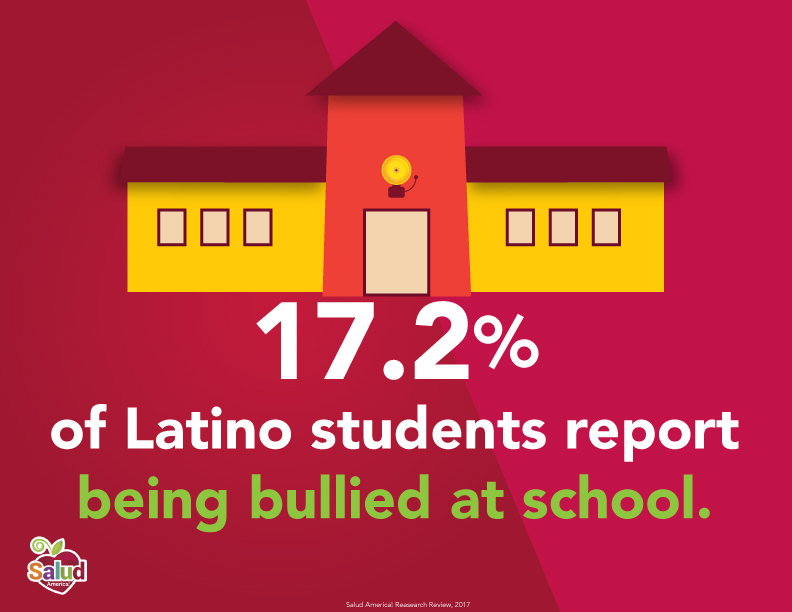
Share On Social!
“David’s Law” is now in effect to criminalize and prevent cyberbullying in and out of Texas schools.
The law is named after David Molak, a 16-year-old San Antonio high school student who took his own life after months of relentless cyberbullying and physical threats.

And David isn’t the only one.
Almost half the U.S. student population experiences some type of bullying.
“David’s law will focus on prevention efforts in schools while offering consequences to those who wish to exploit and harass our children on the Internet,” said Texas State Sen. Jose Menéndez, who filed Senate Bill 179 for David’s Law.
Cyberbullying Impacts Latino Youth
Cyberbullying is a form of bullying.
It doesn’t happen in the halls or the classroom. It happens online, through social media, text messaging, and apps.
Continuous cyberbullying via these online and social platforms can increase a person’s depression, anxiety, low self-esteem, and suicide, just like in-person bullying does.
 Among Latino kids, bullying increases mental health problems, headaches, problems adjusting to school or academic problems, depression, substance use disorder, and long-term damage to their self-esteem.
Among Latino kids, bullying increases mental health problems, headaches, problems adjusting to school or academic problems, depression, substance use disorder, and long-term damage to their self-esteem.
About 17.2% of Latino students report being bullied at school, according to a recent Salud America! mental health research review.
Cyberbullying is on the rise among Latino and all kids.
The percentage of people who have experienced cyberbullying at some point in their lives have nearly doubled (18% to 34%) from 2007 to 2016, according to data from the National Bullying Prevention Center.
The new law aims to reduce those numbers.
What is David’s Law?
David’s Law took effect Sept. 1, 2017, in Texas.

The law requires Texas schools to get involved when there is suspicion of cyberbullying or bullying. They are also required to inform parents of their child being a victim, or if their child is an aggressor. The parents can also be held responsible if they could have intervened but didn’t.
The law also makes it a misdemeanor to electronically harass or bully anyone younger than 18 via texts, social media, websites, etc.
- Sets up an anonymous system for school districts to report cyberbullying/bullying and threats.
- Gives schools the ability to investigate cases on and off campus if it notably affects the school environment, while also allowing schools and law enforcement to work together during investigations.
- Gives schools greater margin to place students in disciplinary programs or to expel students for certain very serious bullying behavior.
- Provides for additional counseling and rehabilitation services to victims and aggressors.
- Requires school boards to create a mental health plan that addresses suicide prevention and bullying.
The goal for David’s Law in Texas is to stop cyberbullying and prevent teen suicide.
“I don’t want another family to deal with heartbreak,” Menéndez told the Texas Tribune. “This thing’s an epidemic right now, and I think we need to make a strong statement.”
Ongoing Efforts to Stop Cyberbullying
David’s parents created David’s Legacy, a foundation directed at raising awareness about cyberbullying and suicide. They offer support for those who are victims, and offer resources for schools and parents.
Other efforts to stop cyberbullying are growing, too.
Julleen Bottoms, an elementary school teacher in Corsicana, Texas, emphasizes safe internet use and how to deal with issues like cyberbullying through kid friendly websites, according to the Texas Tribune.
In San Antonio, anti-bullying experts speak to students in school assemblies.
Teaching tolerance is one of Lisa Berry’s classroom goals.
“To teach others that they can be empathetic and they can go from a bystander to an up-stander, and grow their group of up-standers around them, it’s just a phenomenal act and gives them skills for life,” Berry, a fifth-grade teacher at Woodridge Elementary in the Alamo Heights Independent School District, told KENS-TV.
The Texas Education Agency offers counseling and mental health resources for school educators. The programs cover intervention and prevention in mental health, substance use disorder, and suicide.
Read more about bullying and find resource is you can benefit from.
As a parent or school personnel, what can you do to prevent and educate youth on cyberbullying and the consequences?
Explore More:
Mental HealthBy The Numbers
22
percent
of Latino youth have depressive symptoms, more than any other group besides Native American youth




I know this is a two year old article, but Bias is another reason why some Hispanic people think about or attempt suicide. I’m actually part Filipino, German and English and I ended up looking stereotypically Hispanic and my surname is Spanish due to my Filipino side since the Spanish colonized the Philippines. I’m a woman though and I’ve thought about it for a number of reasons involving my health from a rare disorder that caused learning issues and also I have obvious cancer symptoms Ive tried getting help with. I’ve also been treated poorly and sometimes in very scary situations because of obvious Bias and Prejudice due to my appearance. I’m just saying Bias against people who are Hispanic and “look Hispanic” is a real thing. I apologize if it was in this article but I didn’t notice it, But I do apologize if its in there. I just think it needs to be addressed more. Thank You